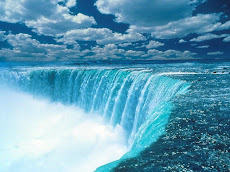
Architectuaral Views :
Florence is a fairly small city laced with alleyways and squares, its skyline dominated by the majestic Duomo cathedral dome built by architect Brunelleschi and consecrated in 1436.
The picturesque waters of the River Arno meander through a cityscape of superb architecture, the exquisite detail of buildings dating back to medieval times and the Renaissance.
The Duomo is a massive cathedral of Romanesque and Gothic styles built between 1334 and 1887, and the building dominates the skyline of Florence. For six euros (2006), tourists can climb inside the cathedral's cupola to see the artwork of Donatello and his contemporaries, or simply look down upon Florence.
The Uffizi Gallery houses one of the most important art collections in the world and is a labyrinth of galleries, private rooms and breathtaking masterpieces.
The Duomo and the Uffizi are just a few minutes stroll from each other and a half hour walking tour will usually get you to or from most of the other major tourist venues such as the Pitti Palace and the Galleria del'Accademia where the recently restored Michelangelo statue of David can be found.
If you don't pre-book to see David, you'll find yourself waiting for an hour or two in a queue. Tourists can also be stuck in queues to the Uffizi if they don't buy tickets in advance.
Journey:
Your holiday travel to Florence is certain to lead you north of the Arno River, where most of the city and its historic sites are located.
South of the river, the Palazzo Pitti district is a living museum of great museums.
Five bridges stretch across the Arno River from central Florence to the southern district called Oltrarno. Grey cobbled stone is the dominant building and street material.
The grandest of the bridges is Ponte Vecchio (Old Bridge), a three-arched span built in 1345 and lined with shops such as jewellers and goldsmiths.
The main tourist office in Florence is about three blocks north of the Duomo at Via Cavour 1r.
Environment:
There are dozens of internet cafes and web access locations throughout Florence, although prices are high.
Travel to Florence and you should protect yourself against pickpockets.
Otherwise, the city is safe to walk at night in most but not all areas.
Attractive Arts:
Perhaps the most famous art centre in Florence is the Palazzo degli Uffizi.
Better known simply as the Uffizi, this fortress building constructed in the late 16th century houses the Uffizi Gallery collection of masterpieces by artists such as Raphael, Botticelli and Titian.
The Uffizi has more great art per square centimetre than any other museum in the world, holding about 1,600 paintings in 45 rooms.
Another popular tourist attraction is, of course, the Duomo cathedral whose massive dome is the signature icon of Florence.
Travel tip ... get to the Duomo as early as possible as only limited numbers of tourists are allowed inside and long queues are common.
Expect to devote several days to exploring just a few of the city's many churches, museums and palaces. Note that there are often long entry queues of tourists waiting outside the city's numerous treasures. The crowds can be discouraging and it's wise to pick a quiet time of year for travel if you want to conveniently enjoy the city's many religious and artistic icons.
The outer fringe of Florence is a combination of suburbs, light industry and olive-bearing hills. Florence is an excellent base for tours to the Chianti wine-growing district and the city is centrally located by train within three hours of cities such as Rome, Milan, Venice and Pisa.
Tuscany is exceptionally rich and the region boasts a magnificent rolling landscape.
The best times to travel through Tuscany are April-June and September to mid-October.


1 comment:
Dosto u need to make the site a bit more colourful. Give another background to it ( onno color diye) or a multicolor pattern. Ohterwise its going well//:)
Post a Comment